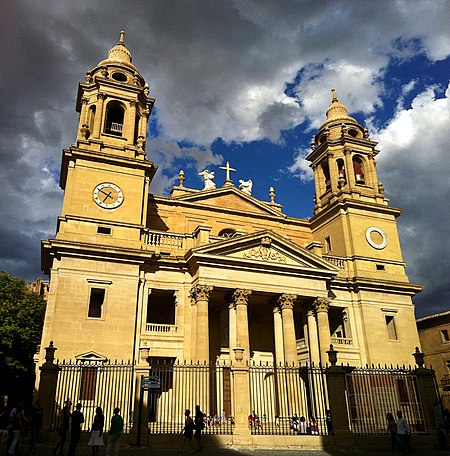Pamplona Cathedral
14th-century Roman Catholic church buildings in Spain18th-century Roman Catholic church buildings in SpainBaroque sculpturesBuildings and structures in PamplonaBurial sites of the Castilian House of Burgundy ... and 9 more
Burial sites of the House of ChampagneBurial sites of the House of ÉvreuxChurches in NavarreCommons category link is locally definedGothic architecture in NavarreGothic artNeoclassical architecture in NavarreRenaissance sculpturesRoman Catholic cathedrals in Navarre

Pamplona Cathedral (Santa María de la Asunción) is a Roman Catholic church in the archdiocese of Pamplona, Spain. The current 15th century Gothic church replaced an older Romanesque one. Archaeological excavations have revealed the existence of another two earlier churches. The Neoclassical façade was designed by Ventura Rodríguez in 1783. It has a 13th-14th-century Gothic cloister that provides access to two other Gothic rooms: the Barbazan chapel and the refectory. The Mediaeval kings of Navarre were crowned and some also buried there. The Navarrese Cortes (Parliament) was held there during the early modern ages.
Excerpt from the Wikipedia article Pamplona Cathedral (License: CC BY-SA 3.0, Authors, Images).Pamplona Cathedral
Calle Compañía, Pamplona Casco Antiguo
Geographical coordinates (GPS) Address External links Nearby Places Show on map
Geographical coordinates (GPS)
| Latitude | Longitude |
|---|---|
| N 42.819702777778 ° | E -1.6409916666667 ° |
Address
Catedral de Pamplona
Calle Compañía
31001 Pamplona, Casco Antiguo
Navarre, Spain
Open on Google Maps









